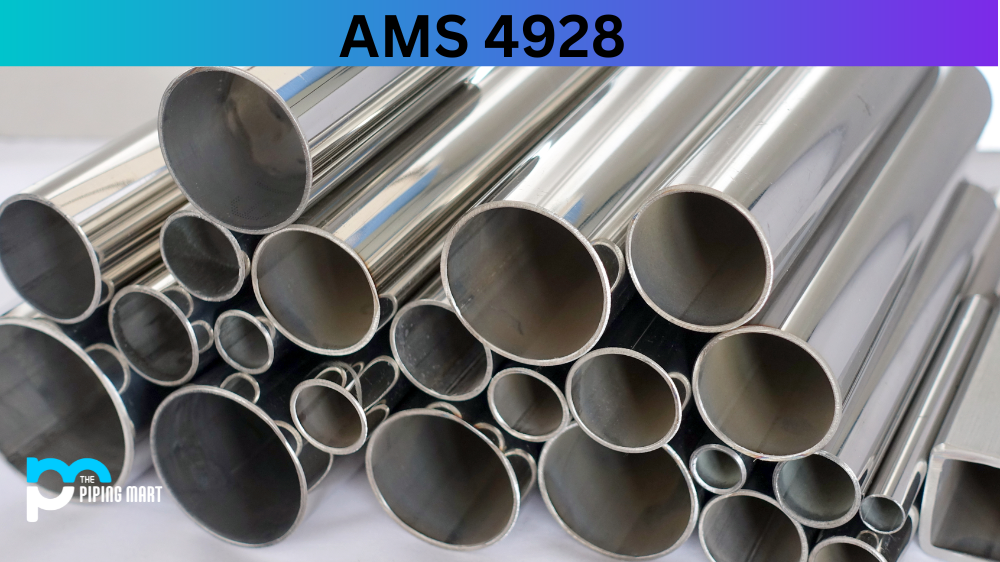Are you looking for a versatile, durable, and strong metal alloy? If so, 321H stainless steel might be exactly what you need. This type of steel combines strength with some corrosion resistance and is often used in the construction of industrial machinery, pressure vessels, and heat exchangers. Let’s dive into the details of this powerful metal alloy.
321H Stainless Steel Composition
UNS S32109 is an iron-based alloy with a minimum chromium content of 18%. The addition of chromium gives this metal its high corrosion resistance properties, whilst other elements like titanium, molybdenum, and nickel further enhance its strength. Its composition also adds to its ability to resist oxidation at elevated temperatures.
| Element | Content (%) |
|---|---|
| Iron, Fe | Balance |
| Chromium, Cr | 17-19 |
| Nickel, Ni | 9-12 |
| Manganese, Mn | 2 |
| Silicon, Si | 1 |
| Titanium, Ti | 0.35 |
| Phosphorous, P | 0.045 |
| Carbon, C | 0.04-0.10 |
| Sulfur, S | 0.03 |
321H Stainless Steel Physical Properties
The physical properties of UNS S32109 make it ideal for certain applications. It has a melting point range between 2600°F – 2690°F (1430°C – 1480°C), which is higher than most other alloys on the market today. It also has a high tensile strength and good formability, making it suitable for a variety of uses. Additionally, its low carbon content makes it more resistant to intergranular corrosion when compared to other stainless steels with higher carbon levels.
| Denstiy lbm/in^3 |
Coefficient of Thermal Expansion (min/in)-°F |
Thermal Conductivity BTU/hr-ft-°F | Specific Heat BTU/lbm -°F | Modules of Elasticity (annealed)^2-psi | |
|---|---|---|---|---|---|
| at 68 °F | at 68 – 212°F | at 68 – 1832°F | at 200°F | at 32 – 212°F | in tension (E) |
| 0.286 | 9.2 | 20.5 | 9.3 | 0.12 | 28 x 10^6 |
321H Stainless Steel Mechanical Properties
This metal has excellent mechanical properties that make it perfect for certain engineering applications. It has a superior strength-to-weight ratio, good fatigue resistance and excellent creep resistance – all necessary qualities for certain industrial components that are constantly exposed to high temperatures or corrosive environments. These mechanical properties are combined with its physical properties to enable it to perform well under extreme conditions without sacrificing durability or performance quality.
| Properties | Metric | Imperial |
|---|---|---|
| Tensile strength | 480 MPa | 69600 psi |
| Yield strength | 205 MPa | 29700 ksi |
| Elongation at break | 29% | 29% |
| Hardness, Brinell | ≤187 | ≤187 |
321H Stainless Steel Equivalent
- UNS S32109
- ASTM A240
- ASTM A480
- ASME 240
321H Stainless Steel Uses
UNS S32109 is mainly used in industrial processes that require intense heat or corrosive environments where other metals may not be able to withstand the conditions without suffering damage or failure. Some examples include oil refining equipment, boilers and power plant components, as well as chemical processing tanks and valves due to their ability to resist oxidation at elevated temperatures and provide superior strength in corrosive environments. Its high tensile strength makes it suitable for use in aerospace projects such as jet engines and turbine blades, too, making it an incredibly versatile metal alloy with a wide range of potential applications in various industries around the world.
Conclusion
In conclusion, 321H stainless steel is an incredibly strong yet versatile metal alloy with superior corrosion-resistant qualities that make it ideal for use in industrial settings where constant exposure to extreme temperatures or extremely corrosive environments can cause damage or deterioration in weaker materials. Its combination of physical and mechanical properties gives it unparalleled durability even under extreme conditions, while its composition provides greater protection against oxidation at elevated temperatures than many other alloys on the market today – making 321H stainless steel perfect for countless different engineering projects! Intended Audience: Industrial engineers looking for material solutions

Pipingmart is a B2B portal that specializes in metal, industrial and piping items. Additionally, we share the latest information and information about materials, products and various types of grades to assist businesses that are involved in this business.




